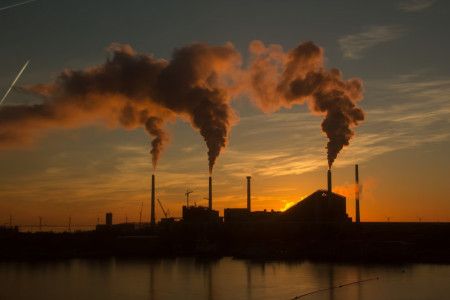The second warmest year in the history of measurements in Serbia, according to the data from the Republic Hydrometeorological Institute, was the year 2022, while even 7 out of 10 warmest winters in Serbia have been recorded since the beginning of this century. Decarbonization, i.e., abandoning coal and other fossil fuels as primary sources of energy production, is a priority in the fight against climate change, as fossil fuels are the primary source of greenhouse gas emissions, which cause global warming.
In the case of Serbia, this will not be easy considering the extent to which our energy system relies on lignite (a type of brown coal mined in the Kolubara and Kostolac basins), primarily for electricity generation. In this regard, Serbia ranks sixth in the world, as about 70% of its electricity is derived from lignite. The combustion of lignite not only significantly contributes to greenhouse gas emissions but also causes significant environmental pollution, particularly air pollution.
The "Nikola Tesla" thermal power plant is one of the largest emitters of sulfur dioxide in the world. In December 2021, during a dramatic decrease in electricity production in thermal power plants due to problems with lignite transportation to the "Nikola Tesla" thermal power plant and the poor quality of lignite, the argument of lignite as an easily accessible resource "falls through."
It is important to note that as a candidate country for full membership in the European Union, Serbia looks up to and aligns with the European policy on combating climate change. Through the National Energy and Climate Plans (NECPs), all member states of the Union collectively contribute to achieving the vision of Europe as a climate-neutral continent by 2050 at the latest. All segments of society must align with this goal, including energy production, industry, transportation, food production, etc. National energy and climate plans are designed as a means to reconcile the goals of ensuring stable energy supply and environmental preservation and the fight against climate change.
Serbia has begun the process of developing this document, and the purpose of the plan is to define goals until 2030 with projections until 2050 for increasing energy efficiency and the share of renewable energy sources in total energy consumption, goals for reducing greenhouse gas emissions, and to offer concrete policies and measures for their achievement.
The content of the document will determine the sources and prices at which we will procure energy. The Integrated National Energy and Climate Plan (INECP) will determine to what extent citizens can engage in the issue of energy transition, how they can secure energy production for their households, or sell their energy production to the market. The document will also define the way in which our households will be heated, whether and at what pace renovations of our buildings and houses will take place, including the installation of facades and new windows. The INECP will also determine how the economy will be supplied with energy and will influence whether and how we will assist our most vulnerable fellow citizens in meeting their electricity and heating needs and securing their basic necessities. Finally, the successful implementation of measures from this document will show whether we can protect ourselves and our children from climate change.
Energy and climate policy reside at every address in Serbia. However, do we all participate in its definition? The extent to which the population will be involved in its development will determine whether and to what extent that policy will be in their interest. The task of creating the Integrated National Energy and Climate Plan falls under the responsibility of the Ministry of Mining and Energy, which initiated the process in March 2021. Two years later, despite numerous announcements, the document has not yet been adopted or put up for public discussion. According to the latest announcements, public discussion will follow soon. When that happens, recognize its importance and get involved!
You can read the text in the Nedeljnik newspaper. News link
Photo source: Freepik.com

